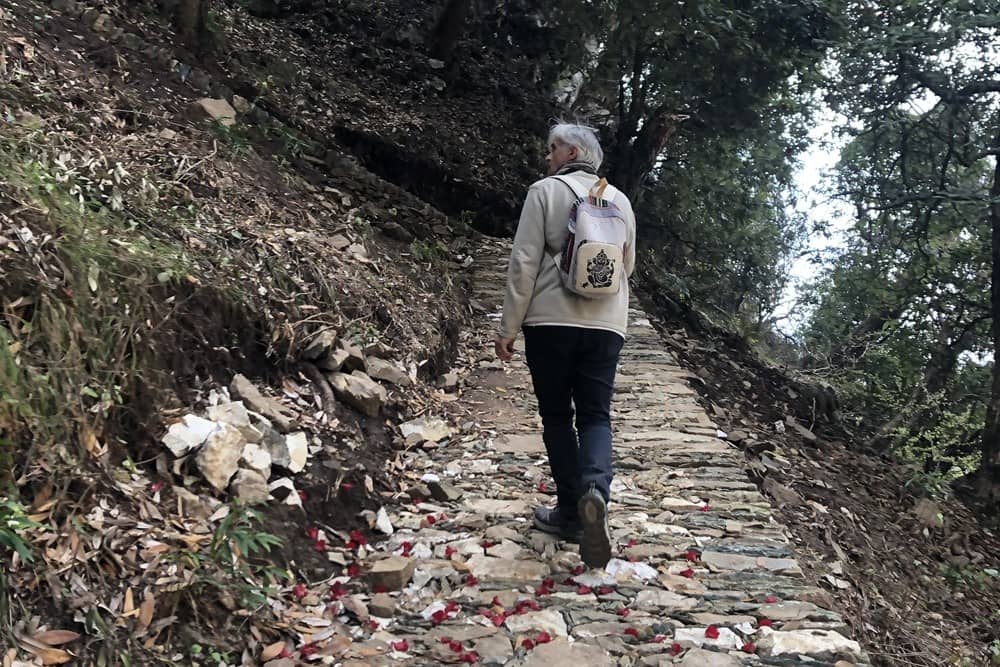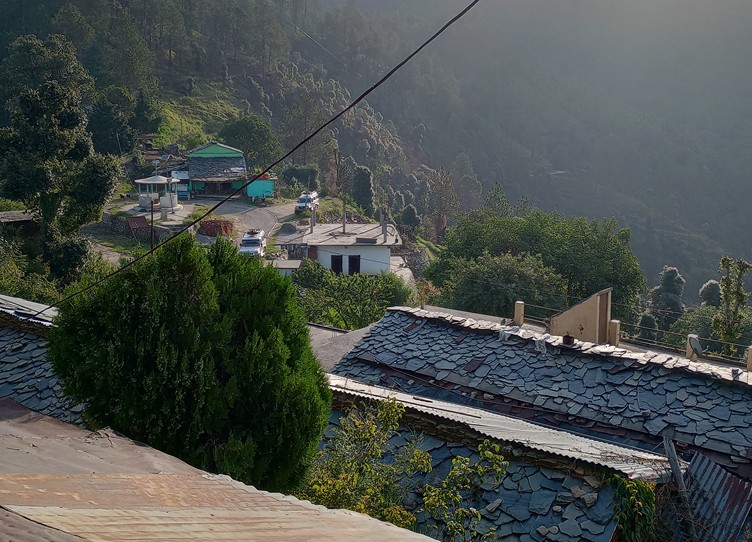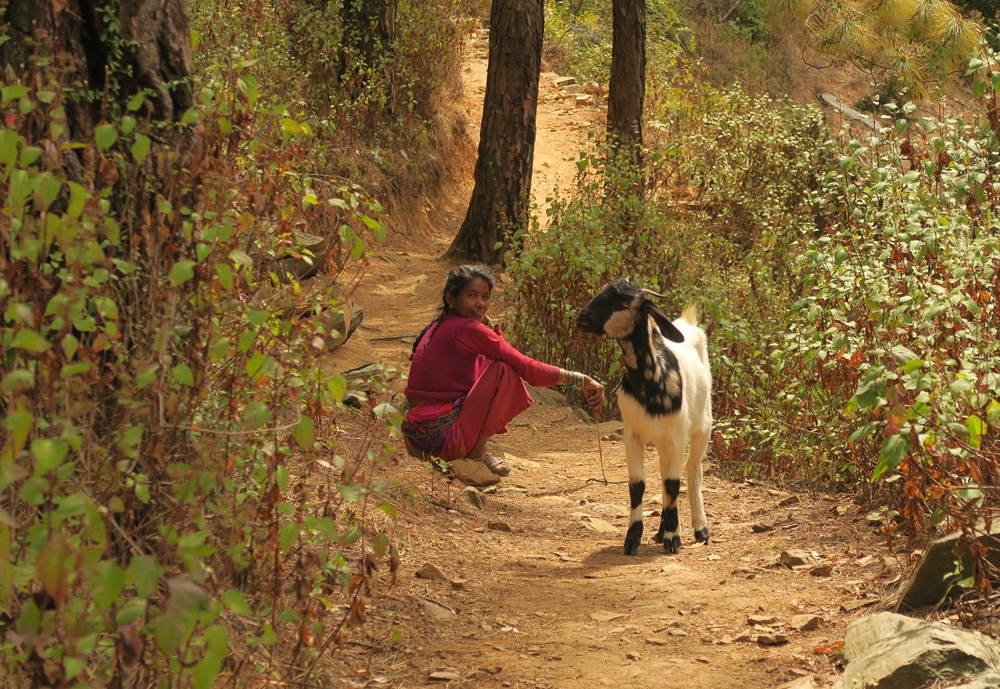Ultimate Guide from Delhi to Mahavatar Babaji Cave in 2025-26
The journey to Mahavatar Babaji Cave is not merely a physical trip; it is a pilgrimage of the soul. Hidden deep within the serene Kumaon Himalayas, near the small village of Kukuchina in Uttarakhand, this sacred spot is revered globally as the place where the immortal yogi, Mahavatar Babaji, lived, meditated, and imparted the ancient science of Kriya Yoga.
For millions of seekers and devotees, especially those familiar with Paramahansa Yogananda’s spiritual classic, Autobiography of a Yogi, reaching this remote cave is a lifelong dream. While the destination promises unparalleled peace, the logistics of navigating the distance from the bustling capital of Delhi to Mahavatar Babaji Cave can seem daunting.
This comprehensive, step-by-step guide provides every detail you need—from selecting the right mode of transport out of Delhi to the final, necessary trek near Kukuchina—to transform your spiritual aspiration into a reality. We will break down the journey into manageable phases, ensuring you are fully prepared for this unforgettable Himalayan ascent.
The Spiritual Nexus: Understanding Mahavatar Babaji’s Cave
Before planning the travel itinerary, it is essential to appreciate the profound significance of this location. The site of Mahavatar Babaji Cave is believed to be where Babaji taught the spiritual truths of Kriya Yoga to Lahiri Mahasaya in 1861.
This event reignited a lineage of spiritual masters that continues through Paramahansa Yogananda and his global teachings.
The cave itself is located on a ridge high above the valley near the villages of Kukuchina and Dunagiri (Dronagiri), surrounded by towering pine and oak forests. Unlike many easily accessible spiritual sites, the path to Babaji’s Cave demands dedication and effort—a symbolic requirement for all true spiritual pursuits.
Many seekers combine this pilgrimage with a visit to the famous Kainchi Dham ashram, associated with Neem Karoli Baba, which lies en route to the cave’s base village.
While Kainchi Dham offers a vibrant, easily accessible spiritual experience, the cave itself is marked by silence, solitude, and raw natural beauty, making it a powerful place for meditation. Understanding this contrast helps set the proper mindset for the travel ahead.

Phase 1: Planning Your Sacred Journey from Delhi (The Major Logistics)
The initial leg of your pilgrimage is traveling from Delhi to the foot of the Kumaon hills. The most practical gateway city is Kathgodam (KGM) or the adjacent city of Haldwani, which are approximately 300-320 kilometers from the capital.
By Train: The Most Reliable and Scenic Route
Traveling by train offers the most comfortable and often the most scenic way to cover the distance.
- Destination: Kathgodam (KGM). This is the last station on the line and provides the easiest access to mountain taxis.
- Key Trains:
- Ranikhet Express (15013/15014): Ideal for an overnight journey. It leaves Delhi (Old Delhi/DLI) in the late evening and arrives in Kathgodam early in the morning, allowing you to start your mountain journey fresh.
- Shatabdi Express (12040/12039): A faster, day-time option from Anand Vihar Terminal (ANVT) for those who prefer to travel during the day.
- Tip: Booking your ticket to Kathgodam is the first critical step in your journey from Delhi to Mahavatar Babaji Cave. Look for early morning arrivals to maximize daytime travel in the hills.
By Road: Flexibility for the Adventurous Traveler
If you prefer the flexibility of driving or the camaraderie of a bus, the road route is viable.
- Self-Drive/Hired Cab: The journey takes approximately 7-8 hours, depending on traffic and fog, especially near the plains. The route typically goes via Hapur, Moradabad, Rampur, and then up to Kathgodam/Haldwani. Be prepared for toll roads and heavy traffic on the National Highways.
- Bus Services: Government (UPSRTC/UTC) and private operators run daily buses, including overnight Volvo and sleeper coaches, between Delhi’s Anand Vihar Bus Terminal and Haldwani. Haldwani is just 6 km before Kathgodam and serves the same logistical purpose. This is a budget-friendly way to travel the distance from Delhi to Mahavatar Babaji Cave.
By Air: The Fastest Option
- Destination: Pantnagar Airport (PGH).
- Logistics: While Pantnagar is closer than Delhi, it is still approximately 70-80 km from Kathgodam/Haldwani and is subject to weather-related delays. Flights from Delhi are infrequent. If you land here, you will need to arrange a taxi for a 2-hour drive to Kathgodam or Haldwani to proceed with the onward journey.

Phase 2: The Gateway to the Himalayas – Kathgodam to Kukuchina
Once you arrive at Kathgodam railway station, you have officially entered the Kumaon region, and the true mountain drive begins. The base area for the trek is the small, quiet village of Kukuchina, situated beyond Ranikhet.
The approximate route is: Kathgodam/Haldwani → Bhowali → Kainchi Dham → Khairna → Ranikhet → Kukuchina.
The Route via Kainchi Dham
Many pilgrims take a slight detour to visit Kainchi Dham, the famous ashram of Neem Karoli Baba, which is about 38 km from Kathgodam. While it’s slightly off the direct route, its popularity makes it a natural stop and an important waypoint for connecting to the main road towards Ranikhet.
- Taxi Hire: This is the recommended mode of transport. Taxis are readily available at the Kathgodam station parking lot.
- Tip: Negotiate a full-day fare or a two-day fare if you plan to stay in Kukuchina overnight and return the following day. A dedicated taxi offers the convenience of keeping your luggage safe while you complete the trek.
- Cost Estimate: The journey from Kathgodam to Kukuchina (approx. 130 km) takes about 4-5 hours and is considerably more expensive than a shared jeep, but far more comfortable.
Shared Jeeps and Buses to Kukuchina (Budget Travel)
For budget travelers, the journey requires more connections:
- Kathgodam to Ranikhet: Take a local bus or shared jeep/taxi from the Kathgodam bus stand towards Ranikhet. This segment takes around 3 hours.
- Ranikhet to Kukuchina: From the Ranikhet main bus stand, you must find another shared taxi or a local bus heading towards Dwarahat or Almora that stops near Kukuchina. This last segment is about 60 km and can take an hour depending on wait times. Kukuchina is a small, quiet place, so transport frequency drops significantly after noon. Plan to reach Ranikhet before lunchtime to secure onward travel.
The travel from Kathgodam marks the moment you leave the noise behind and begin the slow, winding climb into the pristine landscape leading to the sacred location of the Mahavatar Babaji Cave. The crisp mountain air and panoramic views prepare you mentally for the final spiritual effort.

Phase 3: The Ascent – Trekking to the Mahavatar Babaji Cave
The village of Kukuchina serves as the essential base camp for the final trek. It is a tiny settlement with limited infrastructure, consisting primarily of small guesthouses and local shops.
Trek Logistics and Requirements
The cave is situated about 5 to 7 kilometers uphill from Kukuchina, depending on the exact starting point and route taken.
- Difficulty: The trek is classified as moderately difficult. It involves a consistent, steep ascent through dense forest trails. While not technical, it requires good physical stamina and approximately 2-3 hours to reach the cave (and 1.5-2 hours to descend).
- The Path: The path is well-worn but unmarked in many places. There are two primary caves: the upper cave (the original, smaller one where Babaji is said to have lived) and the lower cave (a newer, larger meditation space).
The Necessity of a Local Guide
While seasoned trekkers might attempt the climb alone, hiring a local guide is highly recommended and often necessary for several compelling reasons:
- Safety: The dense forests can be disorienting, and the path sometimes branches off. A local guide ensures you stay on the correct, safe route.
- Local Knowledge: Guides from Kukuchina or Dunagiri often carry the key to the caves, as they are sometimes locked to protect the sanctity and prevent vandalism. They also know the specific spots for water and rest.
- Spiritual Context: Many guides are devotees themselves and can share local lore, ensuring the experience is spiritually rich and properly respectful of the sacred site.
You can arrange for a guide through the small guesthouses in Kukuchina or ask your hired taxi driver to connect you with one.
Delhi to Mahavatar Babaji Cave Distance
The total distance from Delhi to the motorable road end near Kukuchina/Dwarahat is approximately 400 to 435 kilometers (250 to 270 miles) by road.
Here is the breakdown of the journey:
Delhi to Kathgodam (Train/Road Gateway):
-
- Distance: ~300 – 320 km
- Time: 6-8 hours by road; 6-7 hours by express train.
- Kathgodam (or Haldwani) to Kukuchina (Village Base):
- Distance: ~130 km (via Ranikhet and Dwarahat)
- Time: 4-5 hours by taxi, due to winding mountain roads.
- Kukuchina (Road End) to Mahavatar Babaji Cave (Final Ascent):
- Distance: ~2.5 to 3.5 km (This is the trekking distance).
- Time: 1 to 2 hours of moderate uphill trekking.
Practical Tips for the Seeker:
- Best Time to Visit: Mahavatar Babaji Cave is best visited between April and June and September and November. Avoid the heavy monsoon season (July and August) when the trails are slippery and the winter months (December to February) when snowfall makes the trek challenging.
- Accommodation: Book your stay in advance. Simple guesthouses are available in Kukuchina village, offering basic but clean lodging and food. Ranikhet, being a larger town, offers more luxurious hotel options, but requires an hour’s drive to reach the trailhead.
- What to Carry: Carry light snacks, sufficient water (the final refill point is Kukuchina), a walking stick, a small first-aid kit, and an inspiring book (like Autobiography of a Yogi) to read at the cave.
Delhi to Mahavatar Babaji Cave Delhi to Mahavatar Babaji Cave Delhi to Mahavatar Babaji Cave Delhi to Mahavatar Babaji Cave Delhi to Mahavatar Babaji Cave Delhi to Mahavatar Babaji Cave Delhi to Mahavatar Babaji Cave Delhi to Mahavatar Babaji Cave Delhi to Mahavatar Babaji Cave Delhi to Mahavatar Babaji Cave Delhi to Mahavatar Babaji Cave Delhi to Mahavatar Babaji Cave
